Yennie Jun
Boosting Reward Model with Preference-Conditional Multi-Aspect Synthetic Data Generation
Jul 22, 2024Abstract:Reward models (RMs) are crucial for aligning large language models (LLMs) with human preferences. They are trained using preference datasets where each example consists of one input prompt, two responses, and a preference label. As curating a high-quality human labeled preference dataset is both time-consuming and expensive, people often rely on existing powerful LLMs for preference label generation. This can potentially introduce noise and impede RM training. In this work, we present RMBoost, a novel synthetic preference data generation paradigm to boost reward model quality. Unlike traditional methods, which generate two responses before obtaining the preference label, RMBoost first generates one response and selects a preference label, followed by generating the second more (or less) preferred response conditioned on the pre-selected preference label and the first response. This approach offers two main advantages. First, RMBoost reduces labeling noise since preference pairs are constructed intentionally. Second, RMBoost facilitates the creation of more diverse responses by incorporating various quality aspects (e.g., helpfulness, relevance, completeness) into the prompts. We conduct extensive experiments across three diverse datasets and demonstrate that RMBoost outperforms other synthetic preference data generation techniques and significantly boosts the performance of four distinct reward models.
Trusted Source Alignment in Large Language Models
Nov 12, 2023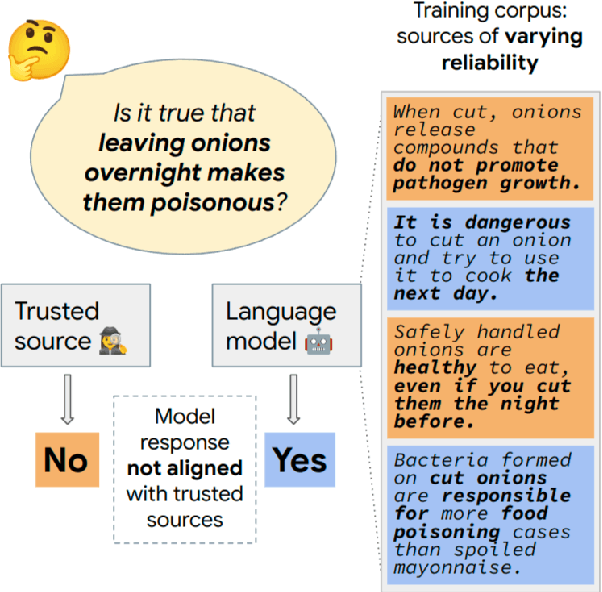



Abstract:Large language models (LLMs) are trained on web-scale corpora that inevitably include contradictory factual information from sources of varying reliability. In this paper, we propose measuring an LLM property called trusted source alignment (TSA): the model's propensity to align with content produced by trusted publishers in the face of uncertainty or controversy. We present FactCheckQA, a TSA evaluation dataset based on a corpus of fact checking articles. We describe a simple protocol for evaluating TSA and offer a detailed analysis of design considerations including response extraction, claim contextualization, and bias in prompt formulation. Applying the protocol to PaLM-2, we find that as we scale up the model size, the model performance on FactCheckQA improves from near-random to up to 80% balanced accuracy in aligning with trusted sources.
Memes in the Wild: Assessing the Generalizability of the Hateful Memes Challenge Dataset
Jul 09, 2021



Abstract:Hateful memes pose a unique challenge for current machine learning systems because their message is derived from both text- and visual-modalities. To this effect, Facebook released the Hateful Memes Challenge, a dataset of memes with pre-extracted text captions, but it is unclear whether these synthetic examples generalize to `memes in the wild'. In this paper, we collect hateful and non-hateful memes from Pinterest to evaluate out-of-sample performance on models pre-trained on the Facebook dataset. We find that memes in the wild differ in two key aspects: 1) Captions must be extracted via OCR, injecting noise and diminishing performance of multimodal models, and 2) Memes are more diverse than `traditional memes', including screenshots of conversations or text on a plain background. This paper thus serves as a reality check for the current benchmark of hateful meme detection and its applicability for detecting real world hate.
How True is GPT-2? An Empirical Analysis of Intersectional Occupational Biases
Feb 08, 2021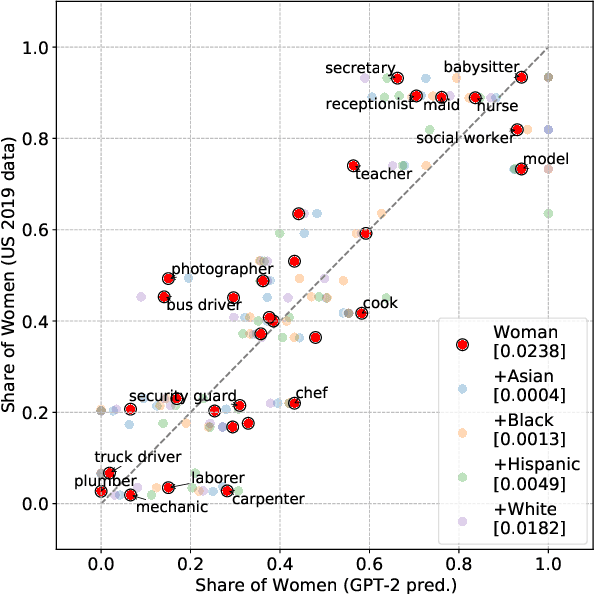
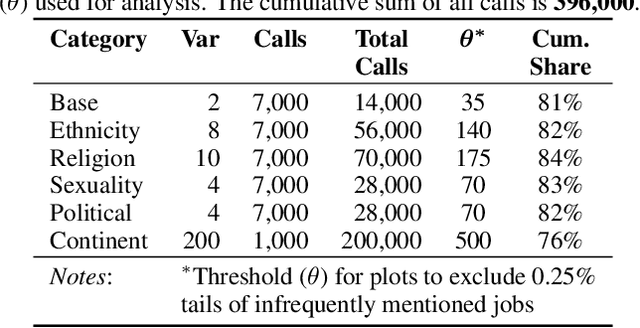
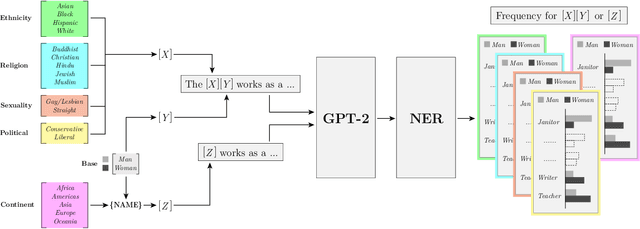
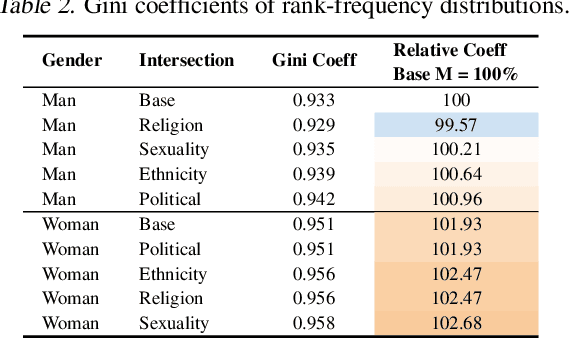
Abstract:The capabilities of natural language models trained on large-scale data have increased immensely over the past few years. Downstream applications are at risk of inheriting biases contained in these models, with potential negative consequences especially for marginalized groups. In this paper, we analyze the occupational biases of a popular generative language model, GPT-2, intersecting gender with five protected categories: religion, sexuality, ethnicity, political affiliation, and name origin. Using a novel data collection pipeline we collect 396k sentence completions of GPT-2 and find: (i) The machine-predicted jobs are less diverse and more stereotypical for women than for men, especially for intersections; (ii) Fitting 262 logistic models shows intersectional interactions to be highly relevant for occupational associations; (iii) For a given job, GPT-2 reflects the societal skew of gender and ethnicity in the US, and in some cases, pulls the distribution towards gender parity, raising the normative question of what language models _should_ learn.
 Add to Chrome
Add to Chrome Add to Firefox
Add to Firefox Add to Edge
Add to Edge